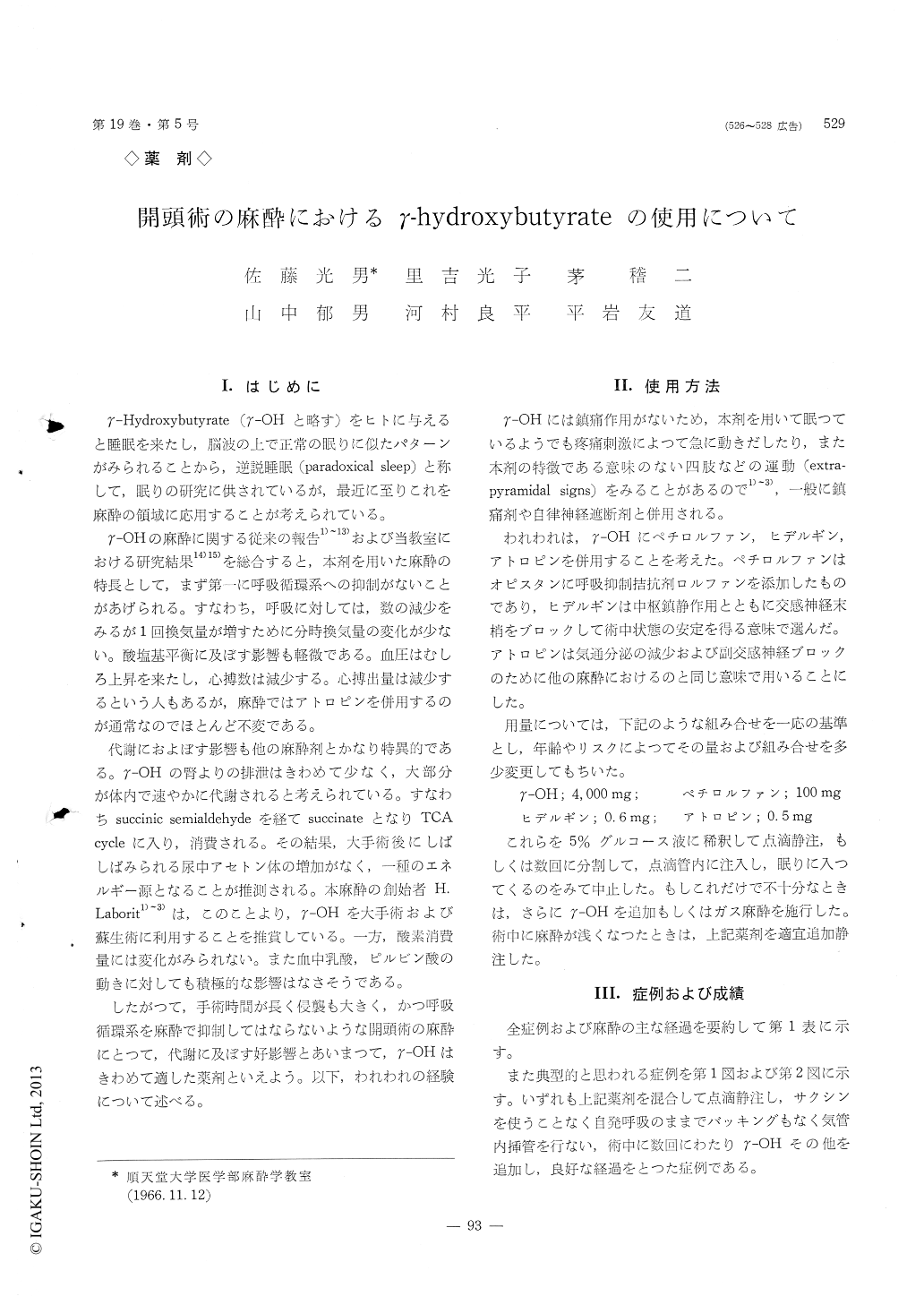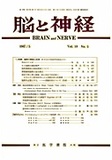Japanese
English
- 有料閲覧
- Abstract 文献概要
- 1ページ目 Look Inside
I.はじめに
γ—Hydroxybutyrate (γ—OHと略す)をヒトに与えると睡眠を来たし,脳波の上で正常の眠りに似たパターンがみられることから,逆説睡眠(paradoxical sleep)と称して,眠りの研究に供されているが,最近に至りこれを麻酔の領域に応用することが考えられている。
γ—OHの麻酔に関する従来の報告1)〜13)および当教室における研究結果14)15)を総合すると,本剤を用いた麻酔の特長として,まず第一に呼吸循環系への抑制がないことがあげられる。すなわち,呼吸に対しては,数の減少をみるが1回換気量が増すために分時換気量の変化が少ない。酸塩基平衡に及ぼす影響も軽微である。血圧はむしろ上昇を来たし,心搏数は減少する。心搏出量は減少するという人もあるが,麻酔ではアトロピンを併用するのが通常なのでほとんど不変である。
Gamma Hydroxybutyrate was administered intrave-nously, combined with atropine, hydergine and pethi-lorfan, in 21 various intracranial surgeries. Under supplemental local or light general anesthesia (50% nitrous oxideoxygen), satisfactory results were obtained during and post-operative periods. The dosage of urea used, was almost similar to that in other anesthitic methods. The advantage and disadvantage of this anesthesia were as follows.
Advantage:
There was no deleterious respiratory, circulatory or any other neurological depression. About two third of the patients were easily intubated without an aid of muscle relaxants and bucking or coughing was rarely observed at which time. In most of the cases, sudden recovery from anesthesia was obtained at the completion of surgery and no significant changes in acid-base balance or carbohydrate and acetone metabo-lism were revealed thereafter.
Disadvantage:
Retching frequently occurred during induction which required heavy sedatives or antiemetics. Occaisional airway obstruction in un-intubated cases, and transient increase in pulse rate and blood pressure were observ-ed. Extrapyramidal signs or postoperative excitement was found in one instance, respectively.
The only noticeable complication in this series, was anuria with pulmonary edema during surgery which unlikely related to the anesthitic method.

Copyright © 1967, Igaku-Shoin Ltd. All rights reserved.


